
OpenGL Library for Delphi & C++Builder,
maintained by GLS Team
| unique hits since 13/04/00 |
 |
OpenGL Library for Delphi & C++Builder,
|
||||||
| News | Features | History | Bugtracker / Docs / Help Community | Gallery | FAQ | Download | Links |
| Demos Gallery | Users Gallery |
These are a few screenshots of GLScene in action, taken from the small samples included with GLScene.
Only a small number of these samples is showcased on this page.
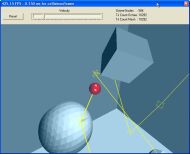
| Octree collision detection Octree-optimized collision detection is supported in GLScene (thanks to Robert Hayes). The screenshot is taken from a demo in which a sphere bounces around in a polygon-rich environment (a 3DS mesh). Other demos cover raycasting. If you're interested in collision-detection, be sure to check Robert's articles at Gone Gold Code Corner section for some insight (very easy to follow, you won't get draught in a sea of maths). |

| Mirror and Reflections The mirror component is based on the stenciling technique outlined by Mark J. Kilgard, with improvements to allow correct rendering in a complex scene (mirror plane clipping and mirror area ZBuffer clearing)... at the expense of framerate (especially on T&L hardware). It is possible to specify which objects will reflect, and which won't, have objects in front and behind the mirror, as well as objects that go through the mirror. |
| Dynamic Shadows This demo by René Lindsay illustrates the use of zBuffer-based shadow maps:
Any visible object casts shadows onto any other objects, and even onto itself. The shadows are NOT pre-calculated. They are dynamically calculated, in Real-time. So, when an object is moved, or animated, its shadow moves with it. Screenshot is from a slow TNT2 | 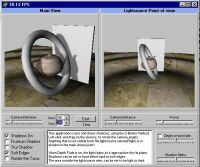
|
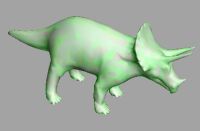
| Stripification GLScene has some mesh manipulation utilities, including a stripification tool. Rather than going into lengthy details, I'll point you to this nice article by Tom Nuydens. The algorithm used is far from the best, but it is compact, reasonnably fast and is enough to triple the fps rating on the Stanford Bunny (3.9 MB) for a GF2 (taking less than a second on a 1GHz CPU, starting from a raw, non-indexed vertex data set). Non-T&L hardware will not benefit much from stripping (if at all). Source, exe and triceratops mesh: stripify.zip (363 kb) |
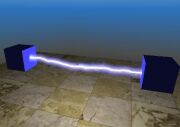
| ThorFX Two shots from the ThorFX demo by René Lindsay. This effect can simulate electric arcs, neons, laser and more. As visible on the shot to the right, the effect can be made to follow a formula/path. The shot to the left does not make justice to the animated nature of the electric arcs ;) | 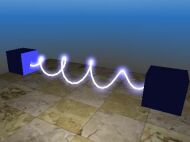
|